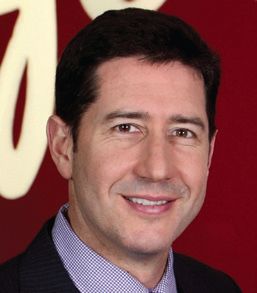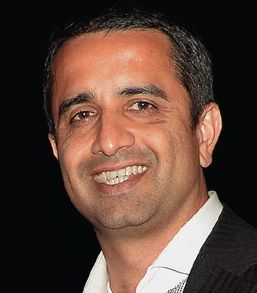Jim Kouzes, Barry Posner and Michael Bunting provide five mini profiles of leaders who are excelling in Australia
Jim Kouzes, Barry Posner and Michael Bunting provide five mini profiles of leaders who are excelling in Australia
AUSTRALIANS ARE fiercely egalitarian. They don’t tolerate hypocrisy, and they certainly won’t follow leaders just because they have a ‘leadership’ title or position. That is why people who can truly lead in this country, who can gain the voluntary engagement of their people, are worth learning from. These are leaders who display the five practices of exemplary leadership – an evidence-based and proven framework. These five practices have proven to be successful foundational principles that, when put into practice, can overcome the special challenges found in Australia and New Zealand, and they are described in our new book, Extraordinary Leadership in Australia and New Zealand: The Five Practices that Create Great Workplaces. Consider the lessons learned from leaders we profile who achieve extraordinary results by applying ‘The Five Practices’.
 INSPIRING A SHARED VISION:
INSPIRING A SHARED VISION:
Jan Pacas
Jan Pacas is managing director at Hilti Australia, a premium brand that makes electrical power tools and fastening technology. He had worked for the company in other parts of the world and was surprised to find that the Australian division was a “very average company”. He believed that they needed a new vision – “something to give us the motivation to work together in one direction … constantly striving for something bigger and better”. Pacas knew that simply having strategic objectives wasn’t enough, and that they needed to translate their comprehensive strategy into something that every person could easily see and describe; that is, a shared vision. ‘We’re Painting Australia Red’ is what they came up with.
Pacas explains: “We painted the picture that we wanted to see a much bigger share of Hilti’s signature red colour on every job site.”
That vision quickly caught on, and ‘Painting Australia Red’ provided a rallying point that got everyone excited about playing a role in the company’s success. Pacas realised that by envisioning exciting future possibilities leaders get people to feel that they’re a part of something special. People get energised when they can envision where the company is heading in the future. Revenues have since grown in double digits every year, and in 2011 Hilti in its first year of entry received the top honour of ‘Best of the Best’ in Aon Hewitt’s Best Employer in Australia and New Zealand citations.

Studdert’s direct reports describe him as a restless explorer, constantly pushing the envelope, constantly thinking, “Are we doing it right? Could we do it differently? Have we thought hard enough? Let’s start a little something and see if we can grow it”. This is what challenging the process is about. It is expanding the boundaries and looking beyond the current reality to future possibility. It does not require the leader to do all the innovating but rather to create a culture that welcomes and rewards innovation from every team member. Under his leadership, both the revenue and reputation of the firm has grown.
.jpg) ENABLING OTHERS TO ACT:
ENABLING OTHERS TO ACT:
Celia Hodson
Celia Hodson is the CEO of the School of Social Entrepreneurs Australia, an organisation that helps local leaders to set up, manage, fund, and lead successful social ventures. Shortly after settling into her new role, Hodson discovered that the school had run out of money. Knowing that this was a challenge beyond the capacity of any single individual, Hodson understood the need to empower everyone on her team to act like leaders.
She enabled them to “proceed until apprehended”, meaning that they were free to “have a go and keep going”. Once team members felt motivated, and empowered, Hodson encouraged them to be leaders of those initiatives. They took ownership and responsibility for the organisation’s success.
Leaders enable people to see that they can develop their skills and actually do more than they thought possible. Hodson’s action of enabling her team to act increased their self determination, and produced a complete turnaround of the school. Making each team member the CEO of their own area helped lead the business from the edge of bankruptcy and closure to a thriving and inspirational organisation.
MODELLING THE WAY:
Tyrone O’Neill
The leadership-follower relationship, particularly in Australia, is predicated on building trust. Tyrone O’Neill, responsible for customer marketing at Optus, one of Australia’s major providers of internet and mobile phone services, well understands this. Trust begins with people knowing who you are and witnessing that your behaviour is consistent with your values.
“It’s only through your actions that you prove your trustworthiness,” explains O’Neill. Leaders must walk the talk and hold themselves, as well as others around them, accountable for putting values into action.
O’Neill and his team, challenged to improve customer retention, realised this would require a fundamental change in the operational habits at Optus. In order for people to really embrace a customer-centred focus, there would have to be a change in behaviours, and he began with his own. O’Neill assigned everyone on the team who was not in a customer-facing role a list of customers, and expected them to call customers directly and go through customer satisfaction surveys with them. Although everyone hated the calls at first, when they saw O’Neill performing the same tasks, their attitudes changed.
Everyone witnessed O’Neill calling and surveying customers personally, even after work hours. He would also visit the call centre and listen in on survey calls and discuss survey results with the call agents. By ‘modelling the way’, O’Neill set a path for his team to follow. The effect was that everyone wanted to get involved and mimic his behaviour. In less than two years, they achieved the best customer retention rates in the company’s history.
 ENCOURAGING THE HEART:
ENCOURAGING THE HEART:
Deven Billimoria
Few things give people greater courage and confidence than feeling they are a part of a team that shares their values and watches out for their best interests, which is how leaders ‘encourage the heart’. Deven Billimoria is CEO of Sydney-based Smartgroup Corporation, a medium-sized holding company that presides over a group of companies, including Smartsalary. The company works with HR and finance departments to help employees properly structure their salaries and benefits. He’s described as having a “real loyalty and commitment to the people around him. Once he’s made an emotional connection with you, you’ve got his support for life”.
Billimoria believes that you cannot really lead people, particularly in Australia, until you build a relationship, and you cannot begin building a meaningful relationship without first knowing people’s names. He makes it a point to know every one of his 340 team members by their first name, and demonstrates by this action that he values each team member with a deep care and concern.
Not so long ago, the Federal Government explored elimination of the principal fringe benefits tax concession which was the foundation of the company’s business model. While some of his competitors reacted by drastically reducing staff, Smartsalary decided not to immediately retrench anyone or manage leave liabilities. They were taking a bold stance, sending a strong signal that they would either find a way out together, or fail together, as a team.
Smartgroup used this opportunity to strengthen their collaborative culture. Everyone was encouraged to work together to find solutions. “We came together as an entire organisation,” Billimoria explains. He told his team: “This is a problem for us. Let’s figure it out.” Leading the business through a major legislation crisis and ultimately managing to keep his staff engaged and efficient contributed to Billimoria and Smartsalary winning multiple accolades, including an Aon Hewitt Best Employer accreditation for the past two years.
These five examples are just a sampling of the difference that implementing ‘The Five Practices of Exemplary Leadership’ can mean in Australia. We share scores of additional examples in our book about Australians and New Zealanders who have applied these leadership principles within a variety of industries. While the contexts vary, organisational success is not so much about any unique characteristic of the individual leaders but about the common application of these leadership practices. Great leadership creates great workplaces that produce extraordinary results. Put these leadership practices into your organisation.
AUSTRALIANS ARE fiercely egalitarian. They don’t tolerate hypocrisy, and they certainly won’t follow leaders just because they have a ‘leadership’ title or position. That is why people who can truly lead in this country, who can gain the voluntary engagement of their people, are worth learning from. These are leaders who display the five practices of exemplary leadership – an evidence-based and proven framework. These five practices have proven to be successful foundational principles that, when put into practice, can overcome the special challenges found in Australia and New Zealand, and they are described in our new book, Extraordinary Leadership in Australia and New Zealand: The Five Practices that Create Great Workplaces. Consider the lessons learned from leaders we profile who achieve extraordinary results by applying ‘The Five Practices’.
 INSPIRING A SHARED VISION:
INSPIRING A SHARED VISION:Jan Pacas
Jan Pacas is managing director at Hilti Australia, a premium brand that makes electrical power tools and fastening technology. He had worked for the company in other parts of the world and was surprised to find that the Australian division was a “very average company”. He believed that they needed a new vision – “something to give us the motivation to work together in one direction … constantly striving for something bigger and better”. Pacas knew that simply having strategic objectives wasn’t enough, and that they needed to translate their comprehensive strategy into something that every person could easily see and describe; that is, a shared vision. ‘We’re Painting Australia Red’ is what they came up with.
Pacas explains: “We painted the picture that we wanted to see a much bigger share of Hilti’s signature red colour on every job site.”
That vision quickly caught on, and ‘Painting Australia Red’ provided a rallying point that got everyone excited about playing a role in the company’s success. Pacas realised that by envisioning exciting future possibilities leaders get people to feel that they’re a part of something special. People get energised when they can envision where the company is heading in the future. Revenues have since grown in double digits every year, and in 2011 Hilti in its first year of entry received the top honour of ‘Best of the Best’ in Aon Hewitt’s Best Employer in Australia and New Zealand citations.

CHALLENGING THE PROCESS:
John Studdert
John Studdert is an Australian leader who never says never. He built a successful consulting business, sold it to the Ogilvy Public Relations organisation, and then served as their CEO and executive chairman in Australia. While in that role, Studdert was persistently searching for opportunities beyond the visible horizons.John Studdert
Studdert’s direct reports describe him as a restless explorer, constantly pushing the envelope, constantly thinking, “Are we doing it right? Could we do it differently? Have we thought hard enough? Let’s start a little something and see if we can grow it”. This is what challenging the process is about. It is expanding the boundaries and looking beyond the current reality to future possibility. It does not require the leader to do all the innovating but rather to create a culture that welcomes and rewards innovation from every team member. Under his leadership, both the revenue and reputation of the firm has grown.
.jpg) ENABLING OTHERS TO ACT:
ENABLING OTHERS TO ACT:Celia Hodson
Celia Hodson is the CEO of the School of Social Entrepreneurs Australia, an organisation that helps local leaders to set up, manage, fund, and lead successful social ventures. Shortly after settling into her new role, Hodson discovered that the school had run out of money. Knowing that this was a challenge beyond the capacity of any single individual, Hodson understood the need to empower everyone on her team to act like leaders.
She enabled them to “proceed until apprehended”, meaning that they were free to “have a go and keep going”. Once team members felt motivated, and empowered, Hodson encouraged them to be leaders of those initiatives. They took ownership and responsibility for the organisation’s success.
Leaders enable people to see that they can develop their skills and actually do more than they thought possible. Hodson’s action of enabling her team to act increased their self determination, and produced a complete turnaround of the school. Making each team member the CEO of their own area helped lead the business from the edge of bankruptcy and closure to a thriving and inspirational organisation.
MODELLING THE WAY:

Tyrone O’Neill
The leadership-follower relationship, particularly in Australia, is predicated on building trust. Tyrone O’Neill, responsible for customer marketing at Optus, one of Australia’s major providers of internet and mobile phone services, well understands this. Trust begins with people knowing who you are and witnessing that your behaviour is consistent with your values.
“It’s only through your actions that you prove your trustworthiness,” explains O’Neill. Leaders must walk the talk and hold themselves, as well as others around them, accountable for putting values into action.
O’Neill and his team, challenged to improve customer retention, realised this would require a fundamental change in the operational habits at Optus. In order for people to really embrace a customer-centred focus, there would have to be a change in behaviours, and he began with his own. O’Neill assigned everyone on the team who was not in a customer-facing role a list of customers, and expected them to call customers directly and go through customer satisfaction surveys with them. Although everyone hated the calls at first, when they saw O’Neill performing the same tasks, their attitudes changed.
Everyone witnessed O’Neill calling and surveying customers personally, even after work hours. He would also visit the call centre and listen in on survey calls and discuss survey results with the call agents. By ‘modelling the way’, O’Neill set a path for his team to follow. The effect was that everyone wanted to get involved and mimic his behaviour. In less than two years, they achieved the best customer retention rates in the company’s history.
 ENCOURAGING THE HEART:
ENCOURAGING THE HEART:Deven Billimoria
Few things give people greater courage and confidence than feeling they are a part of a team that shares their values and watches out for their best interests, which is how leaders ‘encourage the heart’. Deven Billimoria is CEO of Sydney-based Smartgroup Corporation, a medium-sized holding company that presides over a group of companies, including Smartsalary. The company works with HR and finance departments to help employees properly structure their salaries and benefits. He’s described as having a “real loyalty and commitment to the people around him. Once he’s made an emotional connection with you, you’ve got his support for life”.
Billimoria believes that you cannot really lead people, particularly in Australia, until you build a relationship, and you cannot begin building a meaningful relationship without first knowing people’s names. He makes it a point to know every one of his 340 team members by their first name, and demonstrates by this action that he values each team member with a deep care and concern.
Not so long ago, the Federal Government explored elimination of the principal fringe benefits tax concession which was the foundation of the company’s business model. While some of his competitors reacted by drastically reducing staff, Smartsalary decided not to immediately retrench anyone or manage leave liabilities. They were taking a bold stance, sending a strong signal that they would either find a way out together, or fail together, as a team.
Smartgroup used this opportunity to strengthen their collaborative culture. Everyone was encouraged to work together to find solutions. “We came together as an entire organisation,” Billimoria explains. He told his team: “This is a problem for us. Let’s figure it out.” Leading the business through a major legislation crisis and ultimately managing to keep his staff engaged and efficient contributed to Billimoria and Smartsalary winning multiple accolades, including an Aon Hewitt Best Employer accreditation for the past two years.
These five examples are just a sampling of the difference that implementing ‘The Five Practices of Exemplary Leadership’ can mean in Australia. We share scores of additional examples in our book about Australians and New Zealanders who have applied these leadership principles within a variety of industries. While the contexts vary, organisational success is not so much about any unique characteristic of the individual leaders but about the common application of these leadership practices. Great leadership creates great workplaces that produce extraordinary results. Put these leadership practices into your organisation.



